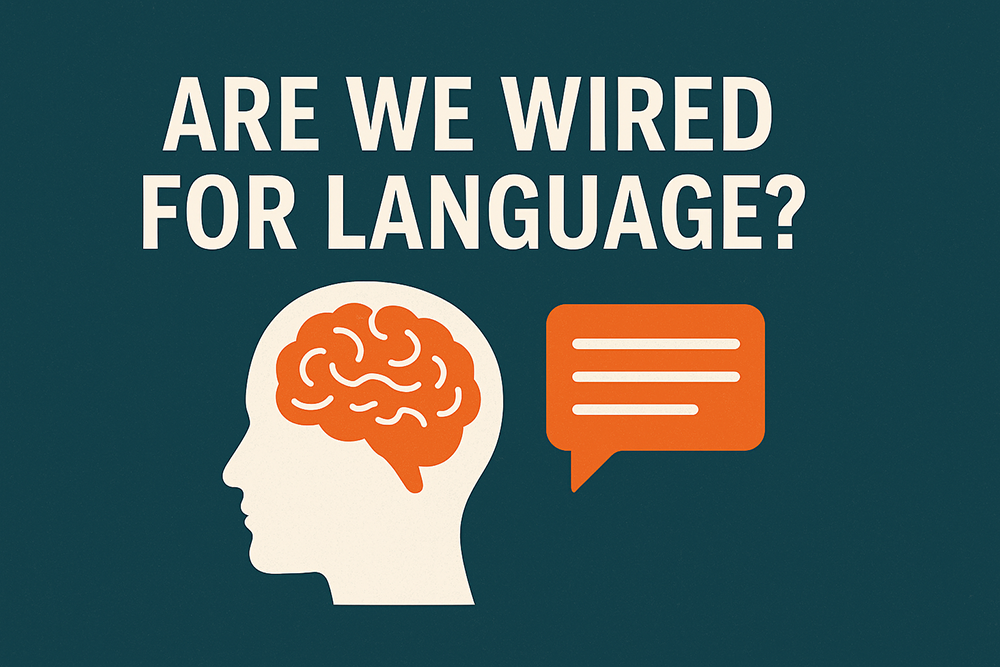One of the great unanswered questions in linguistics is this: How do humans acquire language?
Despite decades of research, no one fully understands how it all works. Is language something we learn through experience by mimicking others? Is it built into our brains from birth? Or is it some combination of both?
One influential theory, proposed and developed by linguist Noam Chomsky, is called Universal Grammar (UG). According to this theory, every human is born with an innate sense of how language works, a kind of mental blueprint that helps us make sense of speech, even when the input is inconsistent or incomplete.
What Babies Seem to Know
Studies show that infants can initially hear distinctions between all the sounds used in the world’s languages, even those not found in the language spoken around them. For example, a baby in an English-speaking home can detect sound differences used in Hindi or Zulu. But by about 10 to 12 months of age, babies begin to lose that sensitivity, tuning in only to the sounds of the language or languages they regularly hear.
This early narrowing shows how quickly the brain adapts to its linguistic environment. Even more remarkable is how young children acquire grammar. They learn to form questions, change verb tenses, and build meaningful sentences often without being explicitly taught. In fact, children sometimes overgeneralize rules, saying things like “goed” instead of “went”,which suggests they are not merely imitating what they hear but are actively constructing the system of language in their minds.
If Universal Grammar is real, this would mean that language is not just a cultural invention. It is a built-in feature of human nature, like the capacity to see or walk. Language may not be something we learn from scratch but something we are born equipped to acquire.
The Deeper Mystery: Where Does the Information Come From?
This raises a larger question. If children are born with a mental framework for language, where does that information come from?
Language is not just random sounds. It is structured, rule-governed, and meaning-rich. It contains syntax, the rules for combining words, semantics, the mapping of words to meaning, and pragmatics, the use of language in context. These layers of complexity point to organized information being present in the human brain from the start.
Here is the key issue: information requires a source. In every known case, meaningful and functional information, whether it is a computer program, a book, or a blueprint, comes from an intelligent mind. It is not the kind of thing that arranges itself through random, unguided processes.
The framework of Universal Grammar, if it exists, would represent a deep, structured form of information embedded within us. If that information cannot be fully explained by environmental learning or by gradual evolution alone, then we are left with a challenging question. Could it have come from an intelligent source?
Language Points to Something More
Regardless of the theory you prefer, the facts are hard to ignore. Human language is unique. No other species uses anything like it. The ability to form infinite expressions from a finite set of words, to understand abstract meaning, to communicate across time and space, all of this suggests that language is not just a useful adaptation. It is a profound feature of human existence.
Universal Grammar, if true, suggests that we are built for language, not merely shaped by it. And the deeper question it opens is not just how we use language, but where the capacity for language ultimately came from.
In a world full of patterns, structure, and meaning, it is worth asking whether the source of those things, including the deep structure of language, is not just material, but intelligent.





